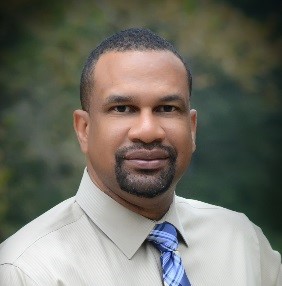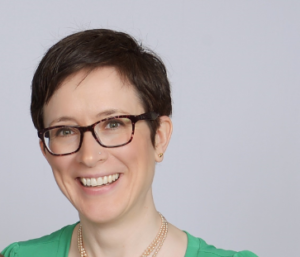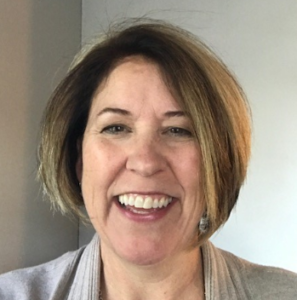In the April 2017 edition, we introduced the concept of HR as business partner as envisioned by Dave Ulrich, author of HR from the Outside In. Ulrich explained that the HR partner model would realign HR with business needs instead of having HR continue to focus on task-based, silo-ed functions such as payroll, recruiting, and compliance. In the May 2017 edition, we asked a member of our HR community, Jason Jankoski, Assistant Dean of Operations in the School of Engineering, to highlight the benefits and risks of the business partner model.
In this edition, we focus on HR business partnership in practice at the School of Medicine and Public Health (SMPH).

Dr. Brian Gittens is the Associate Dean for Human Resources, Equity, and Inclusion in SMPH who says his career has been “marked by change.” Prior to joining UW–Madison, Brian was the Director of Human Resources in the Department of Medicine, and the Director of Diversity Initiatives at the School of Medicine at the University of Virginia. When he accepted the position at SMPH, Brian envisioned implementing a realignment of HR at SMPH, inclusive of the partnership model. We asked him what drove the realignment. Brian explained:
“Sometimes there’s a tendency in HR to do what’s good for us without doing what’s good for our faculty, staff, and students. Our customers need to have one HR contact. The HR business partner is like the PCP [Primary Care Provider] in medicine, and serves as your main contact who helps coordinate service and provides access to specialists.”
Instead of departments, Brian suggested thinking in terms of service teams. These teams aren’t location-oriented but structurally-oriented. They are the service team for your customer, similar to the care team for a patient in medical practice.
An HR service team includes three levels of human resources: transactional, consultative, and strategic. “The trap for HR is that we tend to live in the transactional,” Brian said. While business partners may still spend a third of their time in transactional details, they live in the consultative space. Adjusting to this requires a cultural shift and different service expectations. “Business partnership is a customer service orientation, not HR for the sake of HR,” Brian clarified.
SMPH has roughly 70 people in HR, Payroll and Benefits. The goal of shifting to an HR business partner model is to improve and document processes and manage change more effectively. “About 70% of our HR employees are working as business partners,” Brian said, “and 30% are in the field as specialists or SMEs [subject matter experts].” When shifting to a business partner model, Brian offered, you have to offer a coherent vision for the change, communicate expectations to the team, and if somebody is not interested in functioning as a business partner, investigate whether there’s a better fit on the team. “There have been significant challenges as expected,” Brian acknowledged.
When considering who is a good fit for the partner role, Brian said that he looks for employees who have a shared customer service vision along with excellent interpersonal skills; a history of good relationships with others, including OHR; and trustworthiness among the managers within SMPH. He also seeks those who are open to change, and committed to excellence.
Even with a team of stellar business partners, Brian said it’s important to make it clear that any big change initiative is going to be tough for a while. He suggested that you plan for chaos and dissonance by, for example, over-communicating timelines and the ultimate goal, providing forums for feedback, and listening to the team throughout the change process.

The change at SMPH has been exciting for Elizabeth Marsh who started at SMPH in an entry level HR Assistant role four and a half years ago. She was then hired as an HR Assistant Advanced where she continued to work at the division level, until her recent transition to HR Business Partner, where she now handles both department- and division-level work for her customers.
“It’s been a really cool learning experience at SMPH!” Elizabeth exclaimed. “I’ve come up through ranks, apprenticeship-style.”
As a business partner at the department-level, Elizabeth works on the front line. She ensures policies and procedures are followed, which means she had to learn all of them in order to be able to apply them directly in her work. “The HR Business Partner role is a one-stop shop, however,” she explained. “The department doesn’t have to wait for someone at the Dean’s Office to review things. I bear the responsibility for instigating and implementing work at both levels.”
Elizabeth offered faculty recruitment as an example. “Let’s say Dr. X is leaving, and we need to refill the position. I work with the Department Administrator to discern the needed skill sets, create the wording of the position description, and get TREMS ready for approval. The supervisors and managers work now with me and I work with someone from OHR. This removes a layer of responsibility. Supervisors used to have to work through three levels! They’d talk to their department HR, then their department HR would have to talk to Dean’s Office, then the Dean’s office would have to talk with OHR. I now function as the Dean’s Office and the Department HR.”
Elizabeth admitted that the HR role at UW–Madison is complex. “We have many rules to follow because we’re accountable to the public. It’s our job to know as much as we can. We need everybody [because] not one person can know everything.”
Elizabeth identified three best practices for adopting a business partnership model for work. First, provide a lot of training and education, not only for business partners but also for your supervisors and managers. Second, develop and leverage relationships. It’s important to be able to communicate with OHR, Payroll and Benefits staff, and colleagues in our own and other departments, by asking, for example, “Have you ever seen this happen? In this situation, what have you done in the past?” Finally, don’t be afraid to be wrong. “Every day I’m wrong about something,” Elizabeth said. “And many moments I’m uncertain. It’s important to have a humble outlook.”
Moving to the partner role has meant a cultural transition – from task orientation to advising and coaching. “The HR Business Partner role has always been there,” Elizabeth said. “We’re just living more into it.”
Elizabeth felt her transition to HR Business Partner was easier for her than it might be for someone hired from outside of UW–Madison. “I know the questions to ask. When supervisors say they have grant money and need a lab employee, for example, I first ask, what kind of lab personnel do they need? What will their responsibilities be? I may ask to visit the lab to see for myself how things work. Once I learn what I need to learn from the supervisor, I can run with it. [These are all] things …that I learned the hard way in the past.”
Being intentional about onboarding new HR Business Partners is essential. “We need to do it gradually so new business partners don’t drown from the firehose of policies and procedures! We’re aware that there’s a lot for a new person to learn. The nature of HR at a publicly funded university is complex. We work hard at SMPH to ensure that new HR staff feel empowered. This involves a lot of one-on-one work.” Elizabeth said SMPH uses the UW–Madison ‘peer partner model’ in which new HR employees are assigned a mentor with whom they meet weekly and have access to answers in real-time. “We’ve only heard good things!” she said of the practice.
The other component of intentional onboarding involves training. This is where Laura Fisk comes into the picture. “We’ve created partnerships with OHR [and engaged] Laura who’s been training thirty of us on a weekly basis,” Elizabeth said.

Laura Fisk is a Compensation Analyst with the Compensation and Titling Team at the Office of Human Resources (OHR) who is supporting the realignment of HR at SMPH by providing critical training. For her, a business partner means, “immersing someone who is skilled in an area such as HR or payroll in a business to help the business interpret the [needs for HR or payroll functions] within that business environment.” A liaison is able to step into other’s shoes to learn what might be helpful. “It’s not about jumping in trying to change things,” Laura clarified, “but about bringing forward from the other what might be helpful. Eliciting from them their needs and experience using your HR and payroll experience.”
Laura highlighted things to do and not do when attempting to serve as a partner.
1. Listen to learn and understand how the business operates.
2. Ask a lot: how can I help?
3. Provide resources and materials that are relevant to what’s being
asked for.
4. Allow people in the business to live in their specialties –
don’t expect them to become an expert in your field.
5. Help from the sidelines: teach them how to fish, don’t do the
fishing for them.
6. Facilitate versus prescribe and dictate.
If a group is really struggling, Laura explained, “You may have to prime the pump. You might need to do more teaching at the beginning.” Laura referred to this as ‘pre-partnering activity’ in which the partner provides a lot of expertise upfront. She cautioned that this is not where you want to stay, however.
A group will show signs of being ready to transition to full partnership when its members start to talk about how to apply with their learning. Additionally, it will become clear that there’s a shared language.
As Brian suggested, Laura was also aware that not everyone gravitates toward partnership. In these cases, she suggested, it is important to check for understanding. “Help the people you’re partnering with to talk with one another. I work with many smart people but they don’t always know how to talk with one another to identify their own resources and expertise. [You need to] help them synthesize their learning, concepts, tools, and practices together.”
Laura agreed with Brian that customer service fundamentals are critical. The job of the business partner is to figure out what the business needs. The real need may not be what is presented. Sometimes it’s more hidden.
“When we dig in for more information, we can sometimes figure out a more judicious way to do what is being asked. It’s important to use the systems, and make exceptions sparingly. Generally, you can partner with others in the human resources capacity in common ways using common sense. You have to know your limits and boundaries, and know when you can stretch.”
This requires managing your customer’s expectations, and their understanding of processes. An effective business partner will help the customer understand what it means to make an exception in a given case. A good business partner will be transparent about possible results, to foster good decision-making.
Good decision-making is of course, nurtured by diversity, and Brian added that an important part of the HR Realignment within SMPH is the creation of a Diversity and Inclusion Advocates Program. Brian is creating this program as an adaptation of the University of Pennsylvania’s Diversity Search Advisors Program. “I intend for this to be a resource for launching faculty and administrative searches as well as the creation of ‘safe spaces’,” Brian explained. “I’d like to get faculty and senior administrators with chair nominations to ensure support of their departments for inclusion and diversity.” Brian added that a critical piece of this is being able to provide metrics. For example, a flow analysis allows you to understand who applies (a response to your branding), who is offered an interview (your selection issues), who is offered a job, who accepts, who stays more than one year (your retention), and who passes probation.
For more information about the Diversity and Inclusion Advocates Program and SMPH’s change management journey, join us for Brian Gitten’s session at the HR@UW Conference on Monday, December 4, 2017. Registration for the conference will open in September.